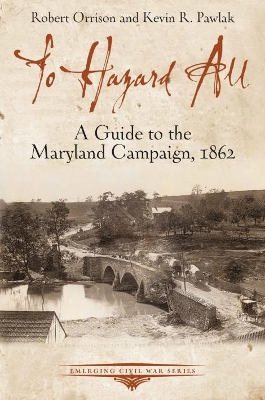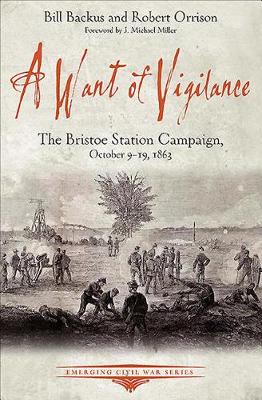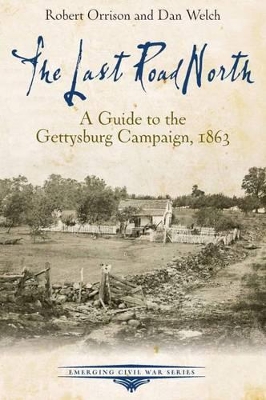Emerging Civil War
3 total works
“The present seems to be the most propitious time since the commencement of the war for the Confederate Army to enter Maryland,” wrote Robert E. Lee following his army’s stunning success at Second Manassas.
Confederate armies advanced across a thousand mile front in the summer of 1862. The world watched anxiously—could the Confederacy achieve its independence?
Reacting to the Army of Northern Virginia’s trek across the Potomac River, George B. McClellan gathered the broken and scattered remnants of several Federal armies within Washington, D. C. to repel the invasion and expel the Confederates from Maryland. “Everything seems to indicate that they intend to hazard all upon the issue of the coming battle,” he said of the invading force.
Historians Robert Orrison and Kevin Pawlak trace the routes both armies traveled during the Maryland Campaign, ultimately coming to a climactic blow on the banks of Antietam Creek. That clash on September 17, 1862, to this day remains the bloodiest single day in American history.
To Hazard All: A Guide to the Maryland Campaign, 1862 offers several day trip tours and visits many out-of-the-way sites related to the Maryland Campaign. Chapters include:
Confederates Enter Maryland
The Federals Respond
The Investment of Harpers Ferry
The Battle of South Mountain
The Battle of Antietam
Return to Virginia
Confederate armies advanced across a thousand mile front in the summer of 1862. The world watched anxiously—could the Confederacy achieve its independence?
Reacting to the Army of Northern Virginia’s trek across the Potomac River, George B. McClellan gathered the broken and scattered remnants of several Federal armies within Washington, D. C. to repel the invasion and expel the Confederates from Maryland. “Everything seems to indicate that they intend to hazard all upon the issue of the coming battle,” he said of the invading force.
Historians Robert Orrison and Kevin Pawlak trace the routes both armies traveled during the Maryland Campaign, ultimately coming to a climactic blow on the banks of Antietam Creek. That clash on September 17, 1862, to this day remains the bloodiest single day in American history.
To Hazard All: A Guide to the Maryland Campaign, 1862 offers several day trip tours and visits many out-of-the-way sites related to the Maryland Campaign. Chapters include:
Confederates Enter Maryland
The Federals Respond
The Investment of Harpers Ferry
The Battle of South Mountain
The Battle of Antietam
Return to Virginia
The months after Gettysburg had hardly been quiet-filled with skirmishes, cavalry clashes, and plenty of marching. Nonetheless, Union commander Maj. Gen. George Gordon Meade had yet to come to serious blows with his Confederate counterpart, Gen. Robert E. Lee. "Lee is undoubtedly bullying you," one of Meade's superiors goaded. Lee's army-severely bloodied at Gettysburg-did not have quite the offensive capability it once possessed, yet Lee's aggressive nature could not be quelled. He looked for the chance to strike out at Meade. In midOctober, 1863, both men shifted their armies into motion. Each surprised the other. Quickly, Meade found himself racing northward for safety along the Orange & Alexandria Railroad, with Lee charging up the rail line behind him. Last stop: Bristoe Station. Authors Robert Orrison and Bill Backus have worked at the Bristoe Station battlefield, which is now surrounded by one of the fastestgrowing parts of Virginia. In A Want of Vigilance, they trace the campaign from the armies' camps around Orange and Culpeper northwest through the foothills of the Blue Ridge Mountains and along the vital railroad-to Centreville and back-in a backandforth game of cat and mouse: the "goggleeyed snapping turtle" versus "the old gray fox" pitted against each other in one of the most overlooked periods of the war.
“I thought my men were invincible,” admitted Robert E. Lee.
A string of battlefield victories through 1862 had culminated in the spring of 1863 with Lee’s greatest victory yet: the battle of Chancellorsville. Propelled by the momentum of that supreme moment, confident in the abilities of his men, Lee decided to once more take the fight to the Yankees and launched this army on another invasion of the North.
An appointment with destiny awaited in the little Pennsylvania college town of Gettysburg.
Historian Dan Welch follows in the footsteps of the Army of Northern Virginia and the Army of the Potomac as the two foes cat-and-mouse their way northward, ultimately clashing in the costliest battle in North American history.
Based on the Gettysburg Civil War Trails, and packed with dozens of lesser-known sites related to the Gettysburg Campaign, The Last Road North: A Guide to the Gettysburg Campaign offers the ultimate Civil War road trip.
A string of battlefield victories through 1862 had culminated in the spring of 1863 with Lee’s greatest victory yet: the battle of Chancellorsville. Propelled by the momentum of that supreme moment, confident in the abilities of his men, Lee decided to once more take the fight to the Yankees and launched this army on another invasion of the North.
An appointment with destiny awaited in the little Pennsylvania college town of Gettysburg.
Historian Dan Welch follows in the footsteps of the Army of Northern Virginia and the Army of the Potomac as the two foes cat-and-mouse their way northward, ultimately clashing in the costliest battle in North American history.
Based on the Gettysburg Civil War Trails, and packed with dozens of lesser-known sites related to the Gettysburg Campaign, The Last Road North: A Guide to the Gettysburg Campaign offers the ultimate Civil War road trip.


